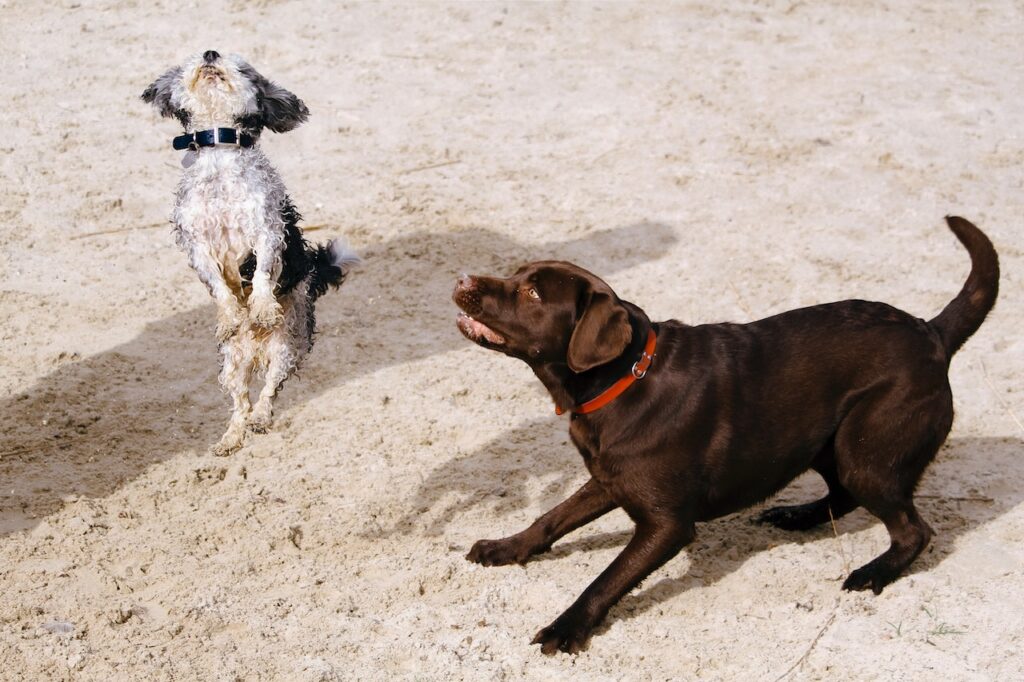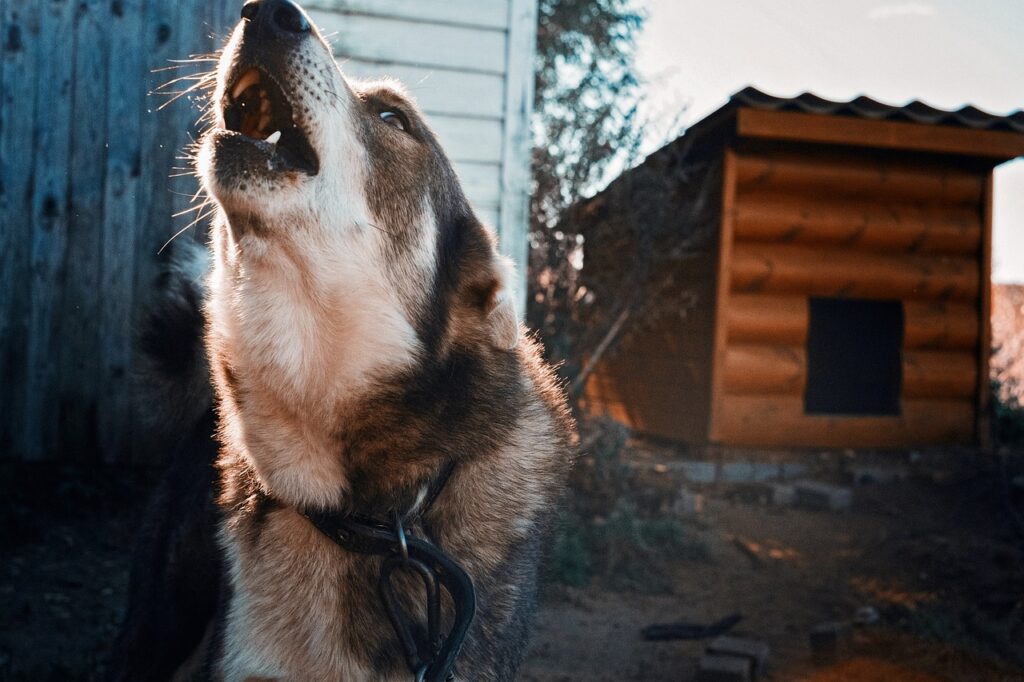Dogs and digging go hand in hand. It’s a behavior that is so common among our canine companions that it has become almost synonymous with being a dog. But why do dogs love to dig? And why is it important for us as dog owners to understand and address this behavior? In this article, we will explore the instinctual roots of digging in dogs, the role of breed and genetics, environmental factors that influence a dog’s desire to dig, the connection between boredom and digging, addressing anxiety and stress-related digging, training techniques to redirect digging behavior, providing adequate exercise and mental stimulation, creating a safe and secure digging area, and finding a balance in managing a dog’s digging behavior.
The Instinctual Roots of Digging in Dogs
To understand why dogs love to dig, we need to look at their evolutionary history. Dogs are descendants of wolves, who are known for their digging behavior. Wolves dig dens for shelter and protection, as well as for storing food. This instinctual behavior has been passed down through generations and is still present in our domesticated dogs today.
Digging also plays a crucial role in a dog’s survival. In the wild, dogs may dig to find prey or to uncover hidden food sources. They may also dig to create a cool spot to lie down in hot weather or to escape extreme temperatures. Digging can also be a way for dogs to mark their territory or communicate with other animals.
This instinctual behavior is hardwired in a dog’s brain. When a dog starts digging, it triggers the release of endorphins, which can create a pleasurable sensation for the dog. This reinforces the behavior and makes them more likely to continue digging in the future.
The Role of Breed and Genetics in a Dog’s Digging Behavior
While all dogs have the instinct to dig, some breeds are more prone to digging than others. Terrier breeds, for example, were originally bred for hunting and digging out prey. They have a strong prey drive and a natural inclination to dig. Other breeds, such as Dachshunds and Beagles, were also bred for digging and have a strong instinct to do so.
Genetics also play a role in a dog’s digging behavior. Certain genes can influence a dog’s predisposition to dig. For example, some dogs may have a higher drive to dig due to their genetic makeup. It’s important to research a breed’s digging tendencies before adopting to ensure that you are prepared for their natural instincts.
Environmental Factors that Influence a Dog’s Desire to Dig
Environmental factors can also influence a dog’s desire to dig. Climate and weather can play a role in a dog’s digging behavior. For example, dogs may dig to create a cool spot in hot weather or to escape extreme temperatures. They may also dig in response to changes in weather, such as rain or snow.
The type of soil and terrain can also affect a dog’s digging behavior. Some dogs may prefer soft soil that is easier to dig in, while others may enjoy the challenge of digging in harder ground. The presence of other animals and wildlife can also influence a dog’s digging behavior. For example, if a dog smells the scent of another animal, they may be more inclined to dig in that area.
The Connection between Boredom and Digging in Dogs
One of the main reasons why dogs engage in destructive digging behavior is boredom. When dogs are left alone for long periods of time without mental or physical stimulation, they may resort to digging as a way to entertain themselves.
It’s important for dog owners to provide their pets with adequate mental stimulation to prevent boredom and destructive behaviors like digging. This can be done through interactive toys, puzzle games, and training exercises. Regular exercise is also crucial for keeping dogs physically and mentally stimulated.
Addressing Anxiety and Stress-Related Digging in Dogs
Anxiety and stress can also manifest in a dog’s digging behavior. Dogs may dig as a way to relieve anxiety or to cope with stressful situations. It’s important for dog owners to identify the root cause of their dog’s anxiety and address it appropriately.
Techniques for reducing anxiety and stress in dogs include providing a safe and secure environment, using calming aids such as pheromone diffusers or anxiety wraps, and implementing positive reinforcement training methods. It’s important to consult with a professional trainer or behaviorist if your dog’s anxiety is severe or persistent.
Training Techniques to Redirect a Dog’s Digging Behavior
Redirecting a dog’s digging behavior can be achieved through positive reinforcement training methods. Instead of punishing your dog for digging, focus on teaching them an alternative behavior, such as digging in a designated area.
To teach your dog to dig in a designated area, start by selecting a spot in your yard where you are comfortable with them digging. Bury some toys or treats in the area to make it more appealing to your dog. When you catch your dog digging in an undesirable area, redirect them to the designated digging area and reward them for digging there instead.
Consistency is key when it comes to training. Make sure to consistently redirect your dog to the designated digging area and reward them for digging there. With time and patience, your dog will learn that digging in the designated area is more rewarding than digging elsewhere.
Providing Adequate Exercise and Mental Stimulation to Curb Digging
One of the most effective ways to prevent digging behavior is by providing your dog with adequate exercise and mental stimulation. Dogs that are tired and mentally stimulated are less likely to engage in destructive behaviors like digging.
Make sure to provide your dog with daily exercise, such as walks, runs, or play sessions. This will help burn off excess energy and keep them physically fit. Mental stimulation is also important for keeping dogs engaged and preventing boredom. This can be achieved through puzzle toys, training exercises, or interactive games.
Establishing a daily routine for your dog can also help prevent digging behavior. Dogs thrive on routine and knowing what to expect. By providing them with a consistent schedule, they will feel more secure and less likely to engage in destructive behaviors.
Creating a Safe and Secure Digging Area for Dogs
If your dog has a strong instinct to dig, it may be beneficial to create a designated digging area for them. This can be a specific spot in your yard where your dog is allowed to dig freely.
To create a safe and secure digging area, start by selecting a spot in your yard that is away from any valuable plants or structures. Clear the area of any rocks or debris that could potentially harm your dog. Bury some toys or treats in the area to make it more appealing to them.
You can also make the digging area more appealing by adding loose soil or sand. This will make it easier for your dog to dig and provide them with a more satisfying digging experience.
Finding a Balance in Managing a Dog’s Digging Behavior
In conclusion, understanding a dog’s digging behavior is crucial for both their well-being and our own sanity as dog owners. By recognizing the instinctual roots of digging in dogs, considering the role of breed and genetics, understanding the environmental factors that influence digging behavior, addressing boredom and anxiety-related digging, implementing training techniques to redirect digging behavior, providing adequate exercise and mental stimulation, creating a safe and secure digging area, and finding a balance between managing a dog’s digging behavior and allowing them to express their natural instincts, we can effectively manage this common canine behavior. With patience, consistency, and understanding, we can ensure that our dogs are happy, healthy, and fulfilled.



